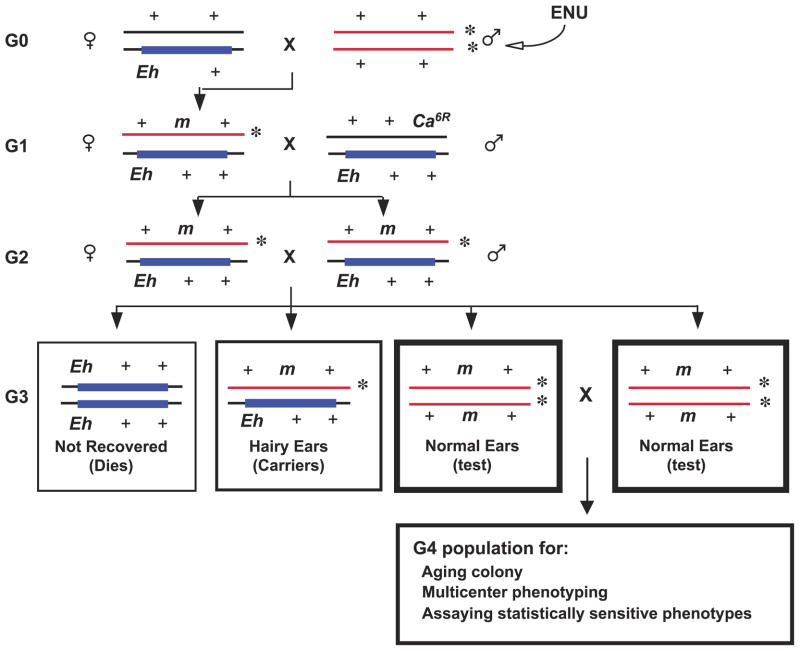Figure 4.
An inversion-mediated screen of the distal portion of Chr 15. The shaded rectangular box on a particular Chr 15 indicates the In (15)Eh 2Rl inversion (denoted as ‘Eh’, which has a hairy-ear phenotype when heterozygous and is lethal when homozygous). This inversion suppresses the recovery of crossover products in the distal part of Chr 15. Ca6R is a radiation-induced, recessive-lethal allele of the Caracul locus, which maps within the region spanned by the In (15) 2Rl (Eh) inversion (L.B. Russell and E.M. Rinchik, unpublished data). Ca6R/+ animals have a mild phenotype of wavy fur and whiskers that can be easily observed whether or not the In (15) 2Rl/+ hairy ears phenotype is present. The normal-eared G3 test class will be homozygous for a particular mutagenized Chr 15 (identified by the asterisk). Absence of G3 mice with normal ears at weaning in any pedigree indicates the presence of a prenatal-, perinatal-, or juvenile-lethal mutation, which can be easily propagated from marked G3 inversion-heterozygotes. If these G3 test-class mice are recovered (i.e., if the pedigree is not segregating a distal Chr-15 lethal mutation), they are bred to generate a larger G4 population that is homozygous for the same mutagenized Chr. These larger G4 populations are important for multicenter phenotyping, for establishment of an aging colony for ascertainment of progressive or late-onset recessive disorders, and for assaying statistically sensitive mutant phenotypes.

